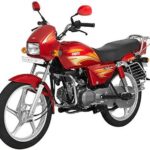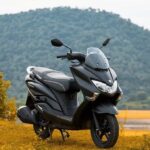10 Powerful Facts About Bajaj Auto That Will Surprise You
Bajaj Auto is one of India’s most iconic two-wheeler and three-wheeler manufacturers, known for its innovation, affordability, and global presence. From commuter motorcycles to scooters and auto-rickshaws, Bajaj Auto has been shaping Indian transportation for decades. This article delves into the history, facts, timeline, significance, FAQs, daily life impact, and societal importance of Bajaj Auto in India, written in a human-friendly style.
History of Bajaj Auto
Foundation (1945):
Founded by Jamnalal Bajaj, Bajaj Auto started as a small-scale manufacturer of scooters and three-wheelers.
Initially, Bajaj assembled Piaggio Vespa scooters in India.
Growth Era (1950s–1970s):
Became the largest scooter manufacturer in India.
Models like Bajaj Chetak and Bajaj Priya became extremely popular.
Bajaj scooters symbolized urban mobility and style.
Motorcycle Expansion (1980s–1990s):
Entered motorcycle production with commuter and performance models.
Launched iconic bikes like Bajaj Pulsar and Bajaj Platina.
Modern Era (2000s–Present):
Focused on sports bikes, electric vehicles, and global exports.
Bajaj Auto is now one of the largest exporters of motorcycles and three-wheelers worldwide.
Known for affordable, reliable, and fuel-efficient vehicles.
Interesting Facts About Bajaj Auto
Bajaj Chetak was the first iconic scooter that defined urban transport.
Pulsar Series revolutionized sporty commuter motorcycles in India.
Bajaj Auto exports to more than 70 countries, including Latin America, Africa, and Southeast Asia.
Three-wheelers (auto-rickshaws) remain a major revenue and employment source.
Bajaj is known for affordable, fuel-efficient, and durable vehicles.
The company has innovated in electric mobility, with bikes like Chetak Electric.
Bajaj motorcycles cater to both youth and daily commuters.
Bajaj Auto has a massive presence in rural and urban India.
Bajaj finance and dealerships support small business owners and entrepreneurs.
The brand combines performance, style, and reliability, making it a household name.
Timeline of Bajaj Auto in India
1945: Bajaj Auto founded by Jamnalal Bajaj.
1950s–1960s: Assembly of Vespa scooters; launch of Chetak and Priya.
1970s: Became India’s largest scooter manufacturer.
1980s–1990s: Entry into motorcycles; launch of Pulsar.
2000s: Expansion into global markets; introduction of sports and commuter bikes.
2010s: Electric mobility initiatives; modern designs and global exports.
2020s: Chetak Electric launch; continued innovation in two-wheelers and three-wheelers.
Significance of Bajaj Auto
Economic Contribution: Bajaj Auto contributes significantly to India’s GDP and employment.
Urban and Rural Mobility: Provides reliable transport solutions for cities and villages.
Youth and Lifestyle: Pulsar and Dominar bikes appeal to youth culture and adventurous riders.
Global Presence: Exports strengthen India’s manufacturing reputation worldwide.
Employment and Entrepreneurship: Bajaj auto-rickshaws and bikes support small businesses and self-employment.
Environmental Impact: Electric vehicles reduce carbon emissions and promote sustainable transport.
Daily Life Convenience: Bajaj vehicles provide affordable, accessible transport for millions.
Innovation Leader: Bajaj Auto continues to set industry standards for performance, design, and technology.
FAQs About Bajaj Auto
Q1: When was Bajaj Auto founded?
A1: Bajaj Auto was founded in 1945 by Jamnalal Bajaj.
Q2: What are the most popular Bajaj motorcycles?
A2: Bajaj Pulsar, Bajaj Platina, Bajaj Dominar, and Bajaj Avenger are some of the top-selling models.
Q3: Does Bajaj produce electric vehicles?
A3: Yes, Bajaj Chetak Electric and other upcoming models focus on sustainable and eco-friendly transport.
Q4: How significant is Bajaj Auto in exports?
A4: Bajaj exports motorcycles and three-wheelers to over 70 countries, making it a global leader.
Q5: Are Bajaj motorcycles fuel-efficient?
A5: Yes, most commuter models provide 50–70 km/l, while scooters range around 40–60 km/l.
Impact on Daily Life
Commuting: Bajaj bikes and scooters reduce travel time and cost for millions.
Employment: Auto-rickshaws and delivery vehicles support self-employment and small businesses.
Education Access: Students use Bajaj bikes to reach schools, colleges, and coaching centers efficiently.
Rural Connectivity: Bajaj three-wheelers provide transport in areas with poor public transport.
Youth Culture: Pulsar, Dominar, and Avenger bikes symbolize independence and style.
Tourism and Adventure: Motorbikes allow weekend trips, adventure rides, and long-distance travel.
Emergency Services: Bikes and three-wheelers are used for quick deliveries of medicines and supplies.
Tips for Bajaj Vehicle Owners
Regular Maintenance: Ensure servicing to maintain fuel efficiency and durability.
Wear Protective Gear: Helmets, jackets, and gloves improve rider safety.
Follow Traffic Rules: Maintain road discipline to prevent accidents.
Choose the Right Model: Pick bikes for commuting, long-distance travel, or city use.
Embrace Electric Mobility: Consider Chetak Electric for sustainable travel.
Join Riding Communities: Learn riding tips, safety practices, and connect with fellow bikers.
Conclusion: Why Bajaj Auto is Important in India
Bajaj Auto is not just a company; it is a pillar of Indian mobility, economy, and lifestyle. By offering affordable, reliable, and innovative two-wheelers and three-wheelers, Bajaj Auto has reshaped commuting, urban and rural transport, and youth culture. Its global presence strengthens India’s manufacturing and export reputation, while electric initiatives promote sustainable mobility.
Bajaj Auto’s vehicles empower millions of riders, students, entrepreneurs, and businesses, making it a key contributor to India’s socio-economic growth. With a legacy of trust, performance, and innovation, Bajaj Auto continues to drive India forward.
Quick Recap: 10 Powerful Facts About Bajaj Auto
Founded in 1945 by Jamnalal Bajaj.
Bajaj Chetak became an iconic scooter.
Pulsar series redefined sporty commuter bikes.
Exports to over 70 countries.
Major player in two-wheeler and three-wheeler segments.
Focus on electric mobility with Chetak Electric.
Affordable, durable, and fuel-efficient vehicles.
Supports employment and self-employment.
Integral to urban and rural connectivity.
Symbol of innovation, performance, and lifestyle in India.
Bajaj Auto Ltd
Founded in: 1945
Headquarters: Pune, India
Website: www.bajajauto.com
Products: scooters, motorcycles and auto rickshaw.
Bajaj Auto Ltd. is an important Indian automobile manufacturer. Bajaj Auto is the second largest two-wheeler manufacturer in India and one of the largest in the world. It is also the earliest one in India to venture into automobile manufacturing. The company produces and exports scooters, motorcycles and the auto rickshaw. Bajaj Auto is based in Pune, Maharashtra, with plants in Akurdi and Chakan, Waluj and Pantnagar in Uttarakhand.
Bajaj Auto Limited was founded on November 29, 1945. At that time it was known as M/s Bachraj Trading Corporation Private Limited. The company initially sold imported two- and three-wheelers in India. In 1959, Bajaj Auto obtained license from the Government of India to manufacture two- and three-wheelers in the country. In 1960, Bajaj Auto became a public limited company.
Over the last few years, Bajaj Auto has smartly and successfully transformed its image from a scooter manufacturer to a two wheeler manufacturer. At present, the product range of Bajaj Auto includes Scooters, Scooterettes and Motorcycles. The last few years have seen company’s real growth in numbers after it successfully introduced a number of new models in various segments of the fast growing bike market in India. In fact, Bajaj Auto smartly introduced new segments in the motorcycle market to take on its arch rival and market leader Hero Honda.
Bajaj Avenger
Bajaj Avenger is a cruiser bike from the stable of Bajaj Auto. Bajaj Avenger is modeled along the lines of Kawasaki Eliminator as it draws the styling and other design cues from Bajaj Eliminator which had an air-cooled, single cylinder Kawasaki engine.
Bajaj CT 100
Bajaj CT 100 is a 100 CC entry-level bike from Bajaj Auto. Bajaj CT 100 clearly targets the value-for-money conscious young bike buyer and offers build quality and trim levels of higher-end bikes at a price closer to that of a traditional metal-bodied scooter.
Bajaj Platina
Baja Platina is a bike built by the Bajaj Auto. Baja Platina borrows extensively from the Bajaj Wind and Bajaj CT 100 models. There are two variants of Platina having engine capacities of 100 CC and 125 CC.
Bajaj Discover DTSi
Bajaj Discover DTSi is a 125 cc bike. The Bajaj Discover has been the highest selling 125 cc bike in India since its inception and far ahead of other bikes in its segment. It is equipped with world�s first 125cc DTSi engine which gives best in class power of 8.47kW (11.51Ps).
Bajaj Pulsar DTSi
Bajaj Pulsar has achieved the status of a cult bike in India. The sturdy and macho looking bike has been hugely popular in the Indian motorcycle market and is largely responsible for changing the ‘scooter manufacturer’ image of Bajaj Auto.
Bajaj Wave
Bajaj Wave scooterette borrows heavily from the old Bajaj Saffire in terms of the overall design but it comes with several new refinements. Bajaj has incorporated its patented DTSi (Digital Twin Spark Ignition) technology and Exhaust TEC into Bajaj Wave.
Bajaj Wind 125
Bajaj Wind* 125 is an executive segment, upright postured, fuel efficient bike from Bajaj Auto. Though manufactured in India, Bajaj Wind 125 is available only for select international markets.








